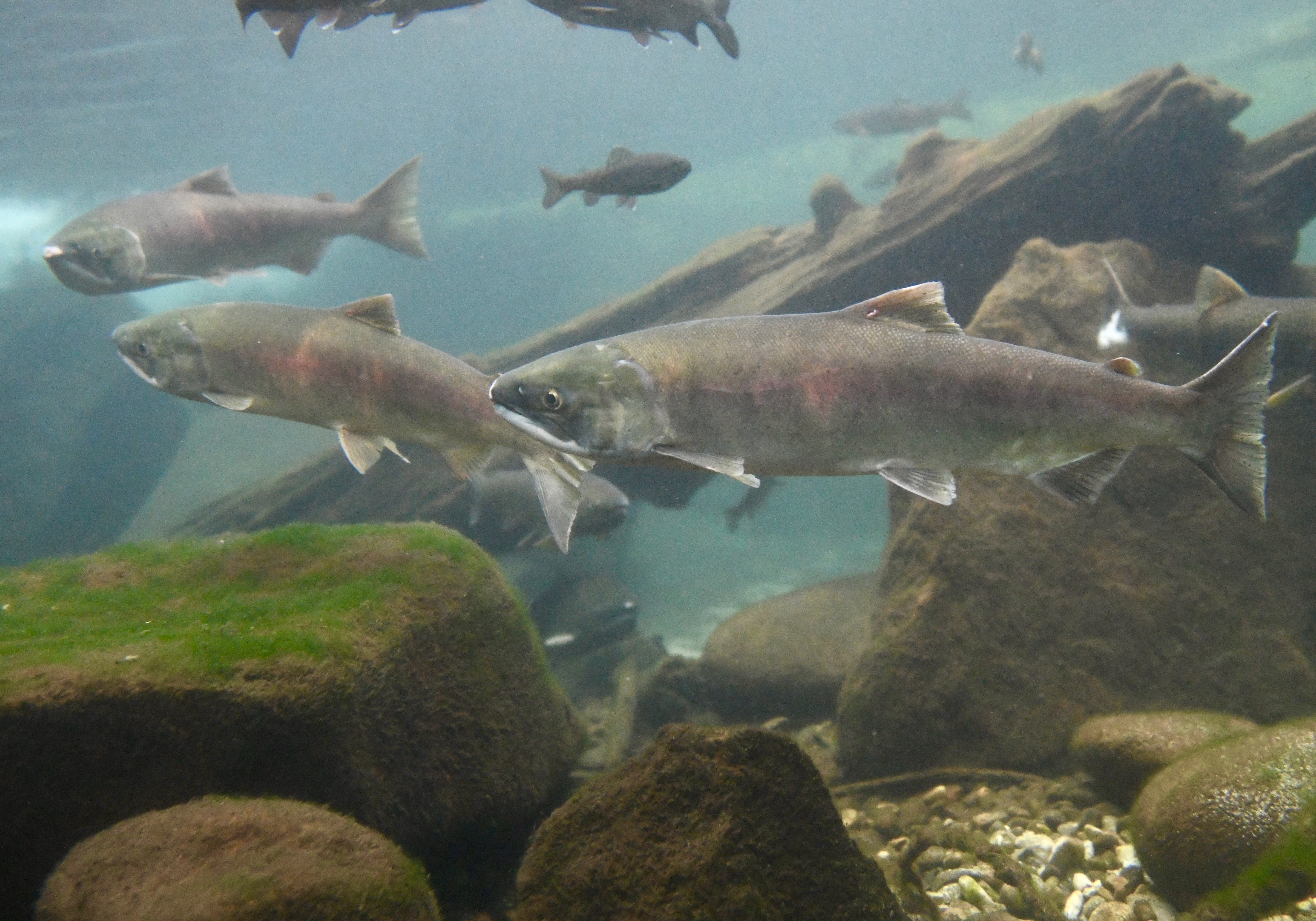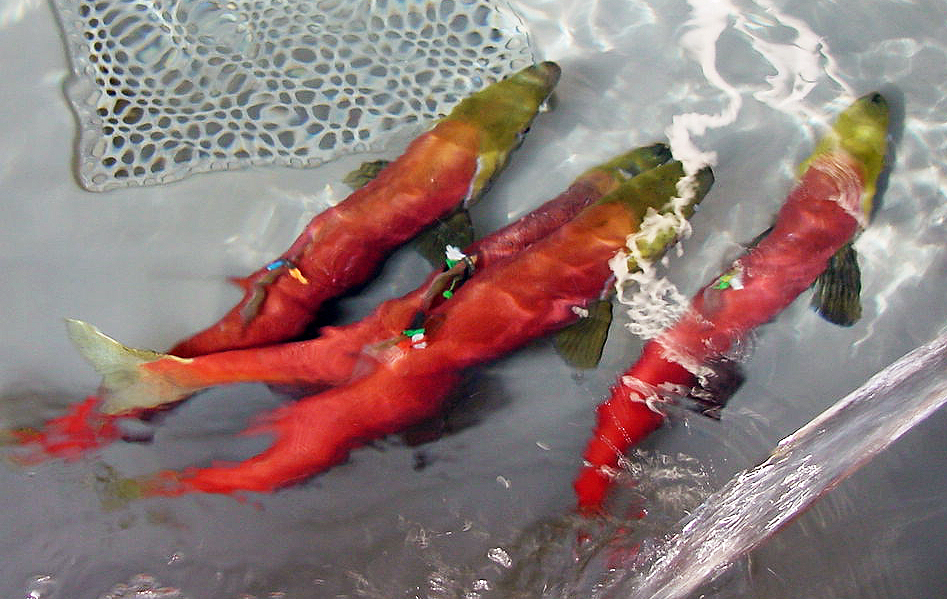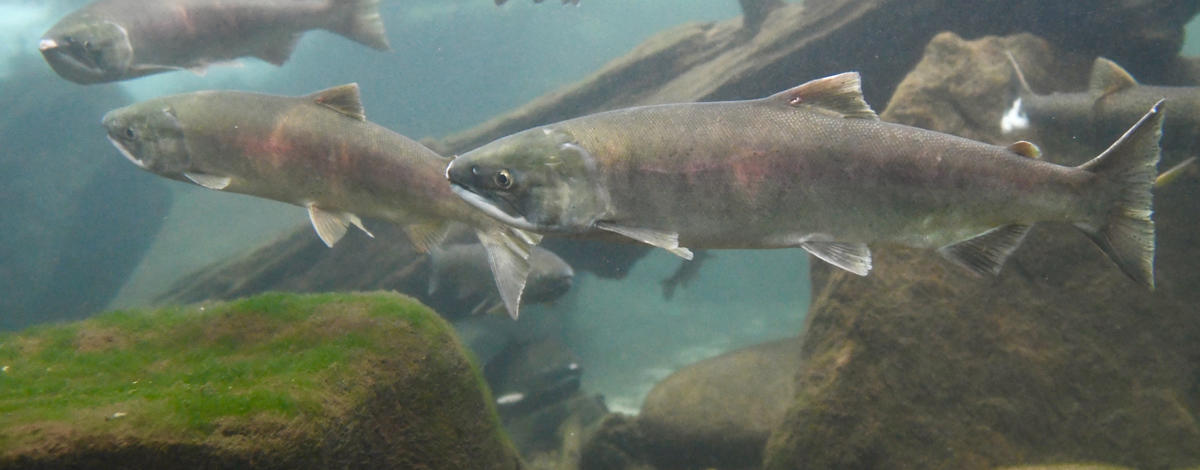With the sockeye run into the Sawtooth Basin near Stanley winding down or over and 44 adults returning, it’s a good time to recap what’s happening with Idaho’s sockeye salmon program.

Despite less than four dozen fish completing the 900-mile journey from the Pacific Ocean to the Sawtooth Basin near Stanley, Idaho Fish and Game and its partners have 2,750 adult sockeye available to naturally spawn in Redfish and Pettit lakes, or to be artificially spawned to replenish hatcheries.
More sockeye than meets the eye
How does all that happen with only 44 adults returning to the Sawtooth Basin?
Idaho’s sockeye program involves much more than young sockeye swimming to the ocean in the spring and biologists crossing their fingers that a small fraction will return as adults two years later.
Since its inception in 1990s, Fish and Game has employed a “spread the risk” strategy that includes sockeye raised in the wild and left to naturally swim to the Pacific and return, as well as young fish raised in hatcheries and released in the spring to migrate to the ocean. There’s also “captive broodstock” which are sockeye raised in hatcheries to adults as an insurance policy if none – or only a few fish – return from the ocean.
Having natural and captive broodstock means biologists can hatch, raise and send the next generation of young fish to the ocean, and if conditions fall in their favor, later welcome back hundreds, or potentially thousands, of adults returning from the ocean.
2021 was a challenging year, but not unprecedented
The 2021 sockeye run faced numerous challenges starting with poor ocean conditions followed by a June heat wave that warmed rivers to temperatures potentially lethal as the fish were returning from the ocean. Dangerously warm water prompted fish managers to pull 201 sockeye from the fish trap at Lower Granite Dam on the Snake River and truck them to the Eagle Hatchery to ensure some fishing returning would be available for spawning.

Under normal circumstances, many of the fish would have swam all the way to the Sawtooth Basin — a journey that is valuable to Idaho’s sockeye recovery efforts, but biologists trapped and trucked fish previously when faced with similarly warm rivers in 2015.
“Our preference would have been to allow those fish to complete the last leg of their journey on their own, because from a genetic perspective, sockeye that make it back to the Sawtooth Basin have a level of fitness that we want in our captive breeding program,” said Lance Hebdon, Fisheries Bureau Chief. “But based on river conditions, trucking fish from Lower Granite Dam to Eagle was a necessary tradeoff to increase survival.”
Biologists anticipated that poor river conditions would mean a low percentage of sockeye would make the final leg from Lower Granite Dam to the Sawtooth Basin, and they were correct. Only 6.7 percent of the fish that had been tagged as juveniles made the complete journey, whereas about 50 percent reach the Sawtooth Basin from Lower Granite in a normal year.
Captive broodstock enhances low returns
During September, Fish and Game biologists and other agency partners released 477 adults from the Eagle Hatchery’s captive broodstock program into Redfish Lake. They also released sockeye that had returned from the ocean into the Sawtooth basin lakes: 49 in Redfish Lake and 3 in Pettit Lake. In addition, Fish and Game transferred and released additional captive broodstock from a safety net program operated by NOAA Fisheries in Washington, which brought the total number of adults released for spawning to 1,112 in Redfish Lake and 99 in Pettit Lake.

Fish and Game also has about 700 captive-reared adults and another 150 adults that returned from the ocean, along with 680 captive adults from NOAA, which are all available for spawning and replenishing hatcheries.
The goals for the Eagle and NOAA hatcheries combined is to produce around 1.1 million eggs to replenish the captive broodstocks and transfer and rear at Fish and Game’s Springfield Hatchery, which is expected to grow about 1 million young sockeye to be released to migrate to the ocean in the future.
The future remains uncertain
As always, it’s difficult, if not impossible, to know what challenges sockeye will face in the future. In order to thrive, salmon need good rearing and migration conditions in Idaho’s lakes and rivers, adequate food in the ocean, and cool rivers for their return to Idaho. When all three are available, the fish have shown amazing resiliency, and they are capable of bouncing back and returning in large numbers.
If any, or all, of those factors are lacking, modest-to-low sockeye runs are likely to continue, but Fish and Game’s sockeye program is designed to use captive breeding and hatcheries to bridge the gap between lean years and productive years and try to ensure Idaho’s sockeye’s long-term survival.
When Idaho sockeye were listed in 1991 under the federal Endangered Species Act, only four adult sockeye returned to the Sawtooth Basin. The total number of sockeye that returned between 1991-99 was 23 fish, including two years when no sockeye returned.
NOTE: This story was updated Sept. 29 to reflect another sockeye that returned to Redfish Lake Creek trap.

